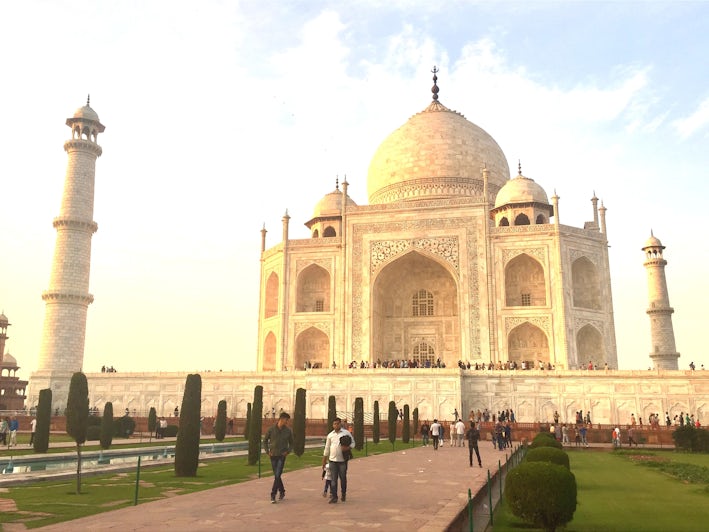
India Golden Triangle Cruise Tour Tips



It's hard to think of a destination more overwhelming than India. With so many regions, languages, cities, people, cuisines, religions and cultures, nearly every visitor finds themselves agonizing over how to see as much as possible in too little time. River cruises in India are a convenient way to see a bunch of incredible destinations in one trip, and many offer additional cruise tours before or after your cruise.
India's Golden Triangle is one popular solution to this dilemma. Perhaps the country's most famous tourist circuit, the loop takes in New Delhi (India's capital) as well as Agra — home to the Taj Mahal — and the "Pink City" of Jaipur in Rajasthan. Think of it like a greatest hits album for travelers who can't make their way from one end of this massive nation to the other in the scope of one vacation.
While India offers a wealth of history and culture to explore, there are some practicalities to consider. With that in mind, we've collected our best tips and information to help you plan. Read on for everything you need to know about a cruise tour visit to India's Golden Triangle.
If you're wondering where to start with cruises on India's major rivers, check out our tips for sailing the Ganges or Brahmaputra rivers.
When is the best time to visit India's Golden Triangle?
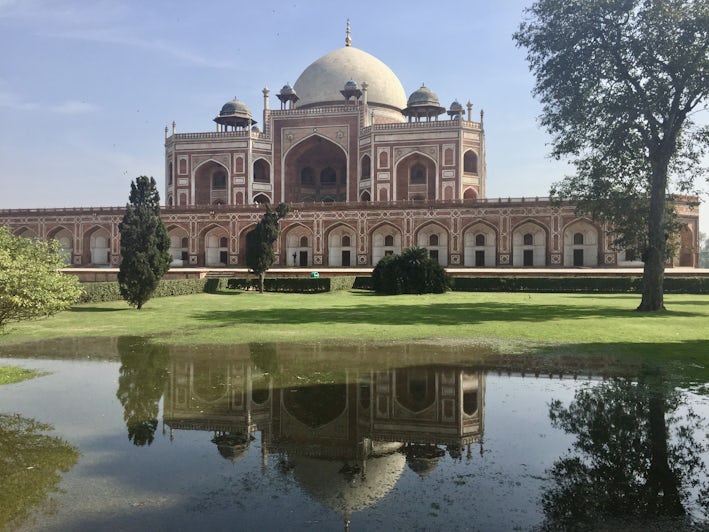
Cruise tours of the Golden Triangle generally run from October to March, when cruise ships are plying the waters of the Ganges and Brahmaputra rivers. These months are outside of India's monsoon season, when rivers swell, overflow and occasionally flood.
During December and the first two weeks of January, fog and smog can cause issues, including delayed flights. The smog can be so thick at this time of year that your view of the Taj Mahal at sunrise may be less than ideal.
February is one of the best month to cruise India's rivers and visit the Golden Triangle, with temperatures in the high 60s and low 70s. By March, temperatures and humidity in North India already begin to climb to uncomfortable levels.
You can also read more about about planning India river cruises with our guide to cruising India's holiest river, the Ganges (or Ganga as it's called in north India).
Which cruise lines offer Golden Triangle cruise tours?
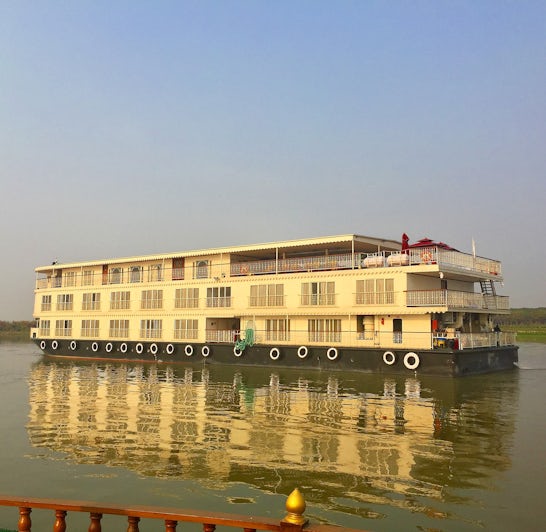
Uniworld offers multi-day Golden Triangle tours as the first part of their Ganges river cruises. The difference between them is the length of the trip, price, luxury level of the hotels and inclusions.
Pandaw offers Golden Triangle cruise tours after cruises on the Brahmaputra River, as does Far Horizon.
What are the highlights of a Golden Triangle cruise tour?
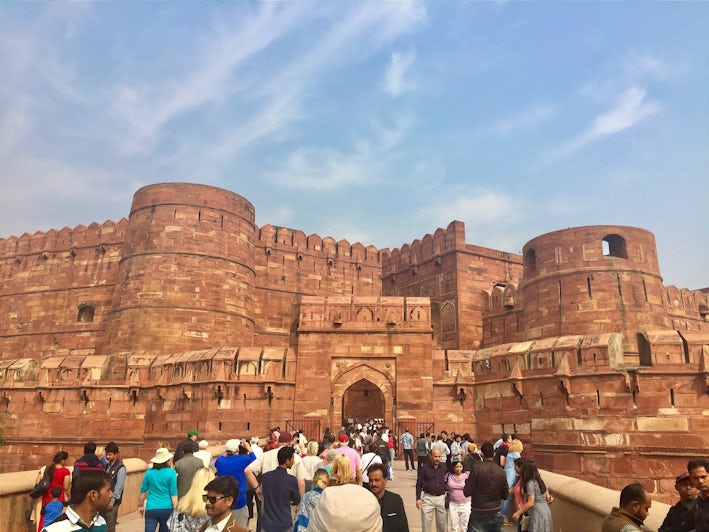
There are plenty of hidden gems outside of the blockbuster sites across all of India. However, with time of the essence on any India visit, we've broken down the best.
New Delhi: India's capital, New Delhi, has three UNESCO World Heritage Sites and is the seat of the national government. Highlights here include Old Delhi, museums that focus on Mahatma Gandhi and his legacy and the monuments of the Mughals, a wealthy Islamic dynasty that ruled northern India from 1526 to 1857. The Red Fort, built by the same ruler who created the Taj Mahal, is also worth exploring. If you get a chance, it's worth making your way to Hazrat Nizamuddin for the qawwali ceremonies on Thursday nights. This musical prayer offered by Sufi Muslims is one of the best ways to immerse yourself in the traditions of India's Muslim minority.
Agra: Everyone comes to Agra for the Taj Mahal and it's one attraction that's worth the hype, even with the crowds. For a more intimate experience, look for a river cruise company that returns to the site at sunrise. You'd also do well to see the Red Fort here if you have time, as it's better preserved than the one in Delhi.
Jaipur: India's "Pink City" is in Rajasthan, the country's western state. Almost as if to compensate for the arid landscape, the colors found in Jaipur's native dress and textiles are riotous. The Amber Palace and Hawa Mahal are two of the most famous spots in town. Come prepared to take a lot of pictures — Jaipur's ornate haveli (mansions or palaces) practically demand to be photographed — and to fulfill your India shopping list.
Let's talk about packing. What should you bring to India?
While how much or how little you pack is up to you, but there are a few considerations to keep in mind. For starters, you'll need to dress modestly when visiting all religious sites, whether temples, mosques or gurudwaras. That means no shorts, short skirts or bare shoulders.
You may also need a shawl or bandana to cover your head (baseball hats, bucket hats, straw hats and the like won't fly). You'll likely be taking your shoes on and off if you visit religious shrines (closed toed shoes are your best bet — cows wander freely in some of the destinations you might visit and leave their mark behind them).
Given the variable temperatures in the fall and winter months, you'll want to bring layers. It can be scorching during the day and chilly at night; or cool all day long.
As always, consider leaving some room in your luggage. India is a souvenir-hunter's dream.
The most important thing you can bring (arguably) is the right medication. See below for our guidance on that.
What itineraries can I expect to find?
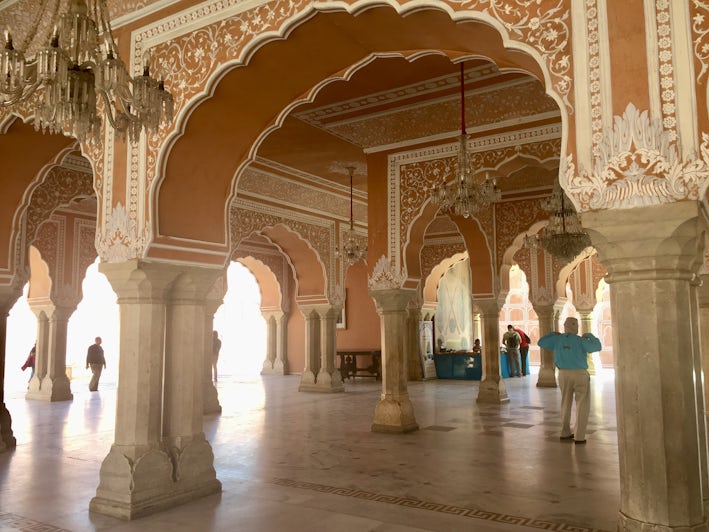
Each cruise tour of the Golden Triangle provides a slightly different glimpse into north India. They generally fall into four buckets, which we've outlined below.
Traditional Golden Triangle Cruise Tours: The typical Golden Triangle trip hits Delhi, Agra and Jaipur; what differs is the amount of time you spend in each and the quality of your hotel. Because of the distance between the sites and transportation to or from your river cruise, expect to spend a minimum of four days -- and more is better -- to do the area justice.
Safari Tours of the Golden Triangle: Abercrombie & Kent add a trip to Ranthambore National Park, where you can see leopards, wild boars, 270 species of birds and -- the star of the show -- the elusive Bengal tiger. Adding this as a stop extends the itinerary by several days, but the chance to see exotic wildlife makes it essential for some.
Adding Varansi to a Golden Triangle Tour: The most sacred site for the Hindus of India, this Ganges city is a popular pre- or post-trip stop after a river cruise, and most of the tour companies offer a visit. Varanasi is considered one of the oldest cities in the world and a visit here is intense. Prayer, temples, and visible displays of devotion happen almost anywhere in town, making Varanasi an incredibly close-up of centuries-old Hindu rituals and beliefs. Many faithful spend their entire lives working toward a pilgrimage here, and it's believed that if a devout Hindu dies in Varanasi, they will achieve instant nirvana and avoid reincarnation. To that end, you just might see funerary processions — the departed carried overhead by chanting family — on their way through Varanasi's narrow alleyways to the public cremation grounds. Pandaw offers this as a standalone extension to some of its itineraries.
Which medications and vaccines do I need for the Golden Triangle?
India is awesome, but there are a few ways you can prepare yourself from some of the common health issues you might face while traveling there. Make sure you're up to date on standard vaccines like tetanus, polio and others. Your doctor or travel medic may also recommend typhoid, hepatitis and other vaccines.
Come armed with your stomach-bug kit as well. It's no secret that certain foodborne illnesses are common in India, mostly related to a lack of proper water treatment.
When you met with your doctor, you should ask for a supply of antibiotics that can be used for traveler's diarrhea (such as Xifaxan or Cipro). Be sure to pack anti-nausea, anti-fever, antacids and anti-diarrhea medications as well.
Dengue has become a problem across nearly all of non-Himalayan India, and malaria may or may not be an issue depending on who you ask. The government notoriously undercounts cases. With that in mind, bug spray is a must. Don't forget to spray yourself only after applying sunscreen.
Check out our guide on how to safeguard your health while traveling India for more information.
Do I need a visa to visit India?
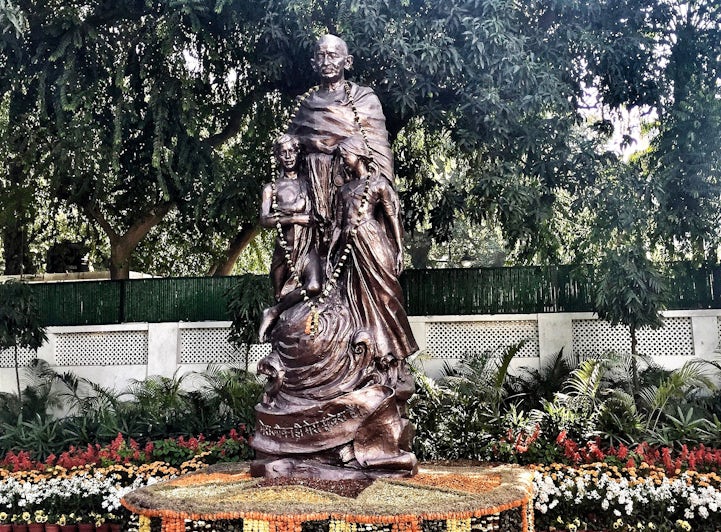
Yes, you need a visa to travel to India from the U.S., U.K., Australia and most other countries. However, what was once an in-person battle with lines, appointment times and finicky requirements has been streamlined into an ETA, or online travel authorization (a visa).
India allows tourist visas to be purchased online up to 4 days before travel, but we absolutely recommend securing yours well in advance. The Indian government's visa website can be a little difficult to navigate, but most people are approved within 72 hours.
Where do I stay while on a cruise tour?
Before you book your tour, check the itinerary closely to see which hotels they use and how far they are from the city center or major sites. Traffic in Golden Triangle cities is atrocious, and if your hotel is too far away from the city center, you could be in for long bus rides (or not see parts of the city at all).
What's included on a cruise tour in the Golden Triangle?
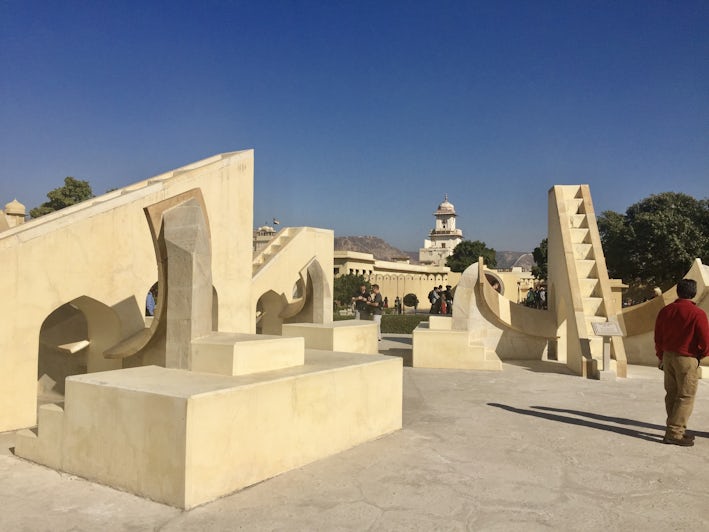
Inclusions can vary on different cruise tours, and even the most expensive tour might not include all of your meals. Additionally, drink options and inclusions can also be different from the lines' offerings in other locations.
Cruise tours sometimes use hotel restaurants to safeguard against foodborne illnesses more frequently found in casual dhabas and street food. Check your itinerary carefully to see what meals are independent, and how much choice you'll have in where you can go.
How do I get around on a cruise tour?
Expect bus rides. The cities of the Golden Triangle don't appear that far from each other on a map, but the country's traffic and state of the roads can mean that your ideas about how long it should take to get somewhere are woefully wrong.
Most Western tour companies have modern coaches with restrooms, as well as bottled water, to keep you comfortable during the longer drives.
While you might want to bring a book, it's more entertaining to look out the window as you go -- traffic comes in all forms in many parts of India, including bikes, rickshaws, peddle rickshaws, donkeys, cows, hand-pulled carts, incomparably bedecked trucks, cars, mopeds and — yes — possibly even working elephants.